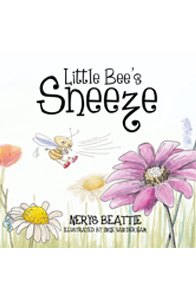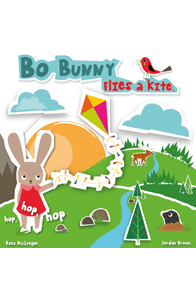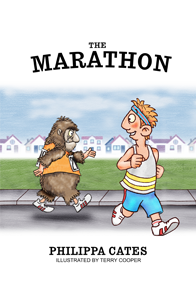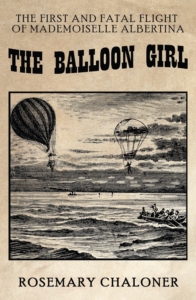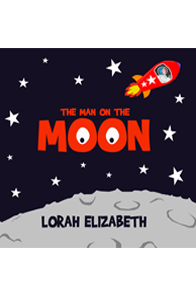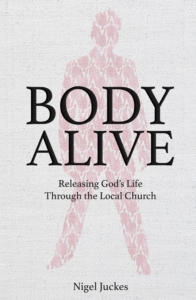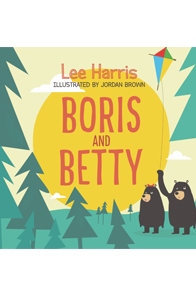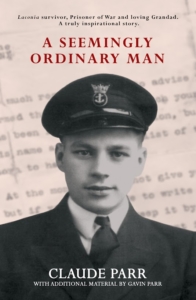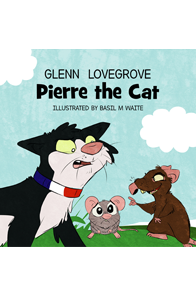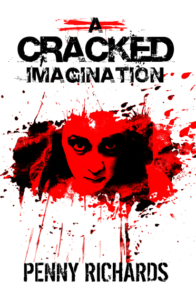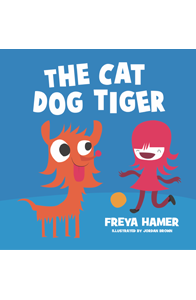As of 2019 bees are currently at a higher risk of extinction than ever before. Pesticides appear to be the main culprit for this growing issue and with her new book Little Bee’s Sneeze Nerys Beattie hopes to send an important message to children and adults alike.
Nerys has taken time away from her three-year-old son, husband and small pack of dogs, to write and create her first ever short children’s fiction book. It follows the journey of a small bee with terrifyingly allergies to flowers. This means she cannot take part in day-to-day bee life, subsequently isolating her from the rest of the hive.
Having always wanted to write, but never having had the time before, Nerys was finally emboldened to start her labour of love after deciding to prioritise the idea she had been holding onto for as long as she can remember. She says: “Once I had thirty minutes to myself and I sat down at my desk, all of the ideas came spilling out. I started at 1pm and by 8pm I had written the entire book!”
Her first venture into children’s fiction is a real treat, shining light upon the trials and tribulations children may face, up against the backdrop of a walking, talking bee hive. Having always suffered from hay fever herself, Nerys wanted to incorporate this into her story. She also tackles issues such as bullying, running away from home and feeling excluded.
Nerys continues: “I wanted to include issues that were integral for parents to talk about with their children, but can often be tricky to handle. This book will hopefully help start the conversation. I also wanted to include bee poison as a representation of the pesticides that are killing bee communities, however, it needed to remain subtle and flow well within the storyline.”
Her collaborator on this project has been Inge Van Der Ham. Inge is a fellow colleague from over twenty years ago who reconnected with Nerys after the author posted her elation at finishing Little Bee’s Sneeze. Inge reached out and offered her skills as the illustrator for the book, and the pair then began to work alongside to bring the story to life.
Little Bee’s Sneeze is an adorable short rhyming story that shows children how our differences make us special. Nerys Beattie invites us to follow the story of a small bee who, by realising her potential, can achieve miraculous things. It is the perfect read for your children during this run up to Christmas.
If you like to publish a picture book with us and take control visit: www.jellybeanselfpublishing.co.uk
Archive for self-publisher
How to Self Publish with Jelly Bean
Know Your Product
Your book is a product – and you are hoping to find buyers for it, just like any other product. But to make sure it is the best it can be – you need to know exactly what it is; are you sci-fi? Non-fiction? What is your book about? Is it a quirky encyclopaedia of the world’s weirdest garden sheds? Or a poetry collection focusing on the struggles of motherhood? Think about the objectives of your book. Knowing your product enables you to make it the best it can be in all aspects; marketing strategy, promotion, finding niche markets, editing, cover design etc.
Where
Before publishing – think about how and where you are going to sell your book. Do you want to approach retailers and bookshops or is your book just something small you want to keep for yourself? Either or, this will dictate the kind of services you require from Jelly Bean Self Publishing. For example, if you want to try and get your books into stores and libraries you will need as ISBN. These kind of thing will all shape what kind of book and deal you want to arrange with us. As a result, we recommend putting some forethought into how you’re going to sell.
Who
Think about who will read your book. If it’s a children’s book – the answer is obvious. The steps to capturing your readers might involve going to school’s to do readings or organising a reading event for children and parents in the area. Jelly Bean Self Publishing author Molly Arbuthnott reached out to schools in the UK and ended up getting orders of her book Oscar the Ferry Cat through her reaching out! So hitting the right market is really important and can really help improve your book’s success in terms of moving copies. See here for more information about Molly’s story…
How
How will you sell? Marketing. Marketing is how you will sell. People need to know your book is out there, and they aren’t going to find you – you need to find them. Here at Jelly Bean Self Publishing we do offer small marketing support, but a lot of it lies on the author’s shoulders to self promote if you want your book to do the best it can.
Attending literary events (or events to do with what your book is about) and doing readings, getting on to social media, interacting with readers and writers who follow you online, entering yourself into competitions – all of these are ways to self promote that cost little-to-nothing. If your book has a niche – make yourself known in these circles. If your book is niche – this can be both an advantage or disadvantage. You might have lots of people in the waiting for a book like yours or your niche might not exist out there – so be aware of either or and do some research if you can.
We recommend thinking of marketing as a little business; overseeing the practicalities of what will bring sales in is so important in ensuring your book’s success.
Kurt Vonnegut was an American writer and author of fourteen books, including classics such as Slaughterhouse-Five, Cat’s Cradle and Breakfast of Champions. His writing is an amalgamation of styles and genres. In his short story collection Bagombo Snuff Box, Vonnegut described eight rules for writing.

Now lend me your ears. Here is Creative Writing 101:
- Use the time of a total stranger in such a way that he or she will not feel the time was wasted.
- Give the reader at least one character he or she can root for.
- Every character should want something, even if it is only a glass of water.
- Every sentence must do one of two things—reveal character or advance the action.
- Start as close to the end as possible.
- Be a sadist. No matter how sweet and innocent your leading characters, make awful things happen to them—in order that the reader may see what they are made of.
- Write to please just one person. If you open a window and make love to the world, so to speak, your story will get pneumonia.
- Give your readers as much information as possible as soon as possible. To heck with suspense. Readers should have such complete understanding of what is going on, where and why, that they could finish the story themselves, should cockroaches eat the last few pages.
But the great man also had one very important caveat:
The greatest American short story writer of my generation was Flannery O’Connor (1925-1964). She broke practically every one of my rules but the first. Great writers tend to do that.’
Our Books
Compared to other publishers that I approached, Jelly Bean always listened, gave advice and were interested in the book itself. Self-publishing can be daunting but Jelly Bean guide you all the way.
★★★★★
Ingrid Stow
All of our reviews can be found on our Google Business Page

Industry Expertise
Our team of publishing pros bring insider knowledge to every project.

Personal Service
We work one-on-one with our authors, and we’re only ever an email or a phone call away.

Quality Craftmanship
No cheap templates or generic AI. All of our interiors, covers and illustrations are bespoke.

Edited For Humans, By Humans
An editor is more than just a spellchecker. Technology is only used to complement, never to replace the human eye.

Expert Printing, Economy Prices
We’re partnered with a range of printers, and our long-standing relationships ensure you the best prices.

100% Your Book
We don’t retain any rights, extract any royalties, or withhold any files. Our contracts are clear and catch-free.



